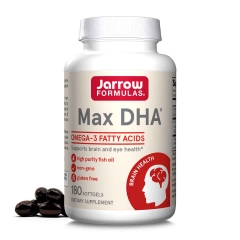-
 Thanh toán đa dạng, linh hoạtChuyển khoản ngân hàng, thanh toán tại nhà...
Thanh toán đa dạng, linh hoạtChuyển khoản ngân hàng, thanh toán tại nhà... -
 Miễn Phí vận chuyển 53 tỉnh thànhMiễn phí vận chuyển đối với đơn hàng trên 1 triệu
Miễn Phí vận chuyển 53 tỉnh thànhMiễn phí vận chuyển đối với đơn hàng trên 1 triệu -
 Yên Tâm mua sắmHoàn tiền trong vòng 7 ngày...
Yên Tâm mua sắmHoàn tiền trong vòng 7 ngày...
SQL for Data Science: Data Cleaning, Wrangling and Analytics with Relational Databases (Data-Centric Systems and Applications)
-

- Mã sản phẩm: 3030575918
- (2 nhận xét)

- Publisher:Springer; 1st ed. 2020 edition (November 10, 2020)
- Language:English
- Paperback:300 pages
- ISBN-10:3030575918
- ISBN-13:978-3030575915
- Item Weight:1.02 pounds
- Dimensions:6.1 x 0.68 x 9.25 inches
- Best Sellers Rank:#3,052,330 in Books (See Top 100 in Books) #1,079 in Database Storage & Design #1,509 in Computers & Technology Industry #6,474 in Databases & Big Data
- Customer Reviews:4.0 out of 5 stars 2Reviews

Mô tả sản phẩm
From the Back Cover
This textbook explains SQL within the contextof data science and introduces the different parts of SQL as they are needed for the tasks usually carried out during data analysis. Using the framework of the data life cycle, it focuses on the steps that are very often given the short shift in traditional textbooks, like data loading, cleaning and pre-processing.
The book is organized as follows. Chapter 1 describes the data life cycle, i.e. the sequence of stages from data acquisition to archiving, that data goes through as it is prepared and then actually analyzed, together with the different activities that take place at each stage. Chapter 2 gets into databases proper, explaining how relational databases organize data. Non-traditional data, like XML and text, are also covered. Chapter 3 introduces SQL queries, but unlike traditional textbooks, queries and their parts are described around typical data analysis tasks like data exploration, cleaning and transformation. Chapter 4 introduces some basic techniques for data analysis and shows how SQL can be used for some simple analyses without too much complication. Chapter 5 introduces additional SQL constructs that are important in a variety of situations and thus completes the coverage of SQL queries. Lastly, chapter 6 briefly explains how to use SQL from within R and from within Python programs. It focuses on how these languages can interact with a database, and how what has been learned about SQL can be leveraged to make life easier when using R or Python. All chapters contain a lot of examples and exercises on the way, and readers are encouraged to install the two open-source database systems (MySQL and Postgres) that are used throughout the book in order to practice and work on the exercises, because simply reading the book is much less useful than actually usingit.
This book is for anyone interested in data science and/or databases. It just demands a bit of computer fluency, but no specific background on databases or data analysis. All concepts are introduced intuitively and with a minimum of specialized jargon. After going through this book, readers should be able to profitably learn more about data mining, machine learning, and database management from more advanced textbooks and courses.
Product Description
This textbook explains SQL within the contextof data science and introduces the different parts of SQL as they are needed for the tasks usually carried out during data analysis. Using the framework of the data life cycle, it focuses on the steps that are very often given the short shift in traditional textbooks, like data loading, cleaning and pre-processing.
The book is organized as follows. Chapter 1 describes the data life cycle, i.e. the sequence of stages from data acquisition to archiving, that data goes through as it is prepared and then actually analyzed, together with the different activities that take place at each stage. Chapter 2 gets into databases proper, explaining how relational databases organize data. Non-traditional data, like XML and text, are also covered. Chapter 3 introduces SQL queries, but unlike traditional textbooks, queries and their parts are described around typical data analysis tasks like data exploration, cleaning and transformation. Chapter 4 introduces some basic techniques for data analysis and shows how SQL can be used for some simple analyses without too much complication. Chapter 5 introduces additional SQL constructs that are important in a variety of situations and thus completes the coverage of SQL queries. Lastly, chapter 6 briefly explains how to use SQL from within R and from within Python programs. It focuses on how these languages can interact with a database, and how what has been learned about SQL can be leveraged to make life easier when using R or Python. All chapters contain a lot of examples and exercises on the way, and readers are encouraged to install the two open-source database systems (MySQL and Postgres) that are used throughout the book in order to practice and work on the exercises, because simply reading the book is much less useful than actually usingit.
This book is for anyone interested in data science and/or databases. It just demands a bit of computer fluency, but no specific background on databases or data analysis. All concepts are introduced intuitively and with a minimum of specialized jargon. After going through this book, readers should be able to profitably learn more about data mining, machine learning, and database management from more advanced textbooks and courses.
About the Author
Antonio Badia is Associate Professor in the Department of Computer Science and Engineering at the University of Louisville, KY, USA. He has taught both introductory and advanced college database courses for more than 20 years, and created and taught a course on data management and analysis for non-computer science students. His research on database systems has been funded by NSF and others, and produced more than 50 publications in conferences and technical journals.
- Mua astaxanthin uống có tốt không? Mua ở đâu? 29/10/2018
- Saffron (nhụy hoa nghệ tây) uống như thế nào cho hợp lý? 29/09/2018
- Saffron (nghệ tây) làm đẹp như thế nào? 28/09/2018
- Giải đáp những thắc mắc về viên uống sinh lý Fuji Sumo 14/09/2018
- Công dụng tuyệt vời từ tinh chất tỏi với sức khỏe 12/09/2018
- Mua collagen 82X chính hãng ở đâu? 26/07/2018
- NueGlow mua ở đâu giá chính hãng bao nhiêu? 04/07/2018
- Fucoidan Chính hãng Nhật Bản giá bao nhiêu? 18/05/2018
- Top 5 loại thuốc trị sẹo tốt nhất, hiệu quả với cả sẹo lâu năm 20/03/2018
- Footer chi tiết bài viết 09/03/2018
- Mã vạch không thể phân biệt hàng chính hãng hay hàng giả 10/05/2023
- Thuốc trắng da Ivory Caps chính hãng giá bao nhiêu? Mua ở đâu? 08/12/2022
- Nên thoa kem trắng da body vào lúc nào để đạt hiệu quả cao? 07/12/2022
- Tiêm trắng da toàn thân giá bao nhiêu? Có an toàn không? 06/12/2022
- Top 3 kem dưỡng trắng da được ưa chuộng nhất hiện nay 05/12/2022
- Uống vitamin C có trắng da không? Nên uống như thế nào? 03/12/2022
- [email protected]
- Hotline: 0909977247
- Hotline: 0908897041
- 8h - 17h Từ Thứ 2 - Thứ 7
Đăng ký nhận thông tin qua email để nhận được hàng triệu ưu đãi từ Muathuoctot.com
Tạp chí sức khỏe làm đẹp, Kem chống nắng nào tốt nhất hiện nay Thuoc giam can an toan hiện nay, thuoc collagen, thuoc Dong trung ha thao , thuoc giam can LIC, thuoc shark cartilage thuoc collagen youtheory dau ca omega 3 tot nhat, dong trung ha thao aloha cua my, kem tri seo hieu qua, C ollagen shiseido enriched, và collagen shiseido dạng viên , Collagen de happy ngăn chặn quá trình lão hóa, mua hang tren thuoc virility pills vp-rx tri roi loan cuong duong, vitamin e 400, dieu tri bang thuoc fucoidan, kem chống nhăn vùng mắt, dịch vụ giao hang nhanh nội thành, crest 3d white, fine pure collagen, nên mua collagen shiseido ở đâu, làm sáng mắt, dịch vụ cho thue kho lẻ tại tphcm, thực phẩm tăng cường sinh lý nam, thuoc prenatal bổ sung dinh dưỡng, kem đánh răng crest 3d white, hỗ trợ điều trị tim mạch, thuốc trắng da hiệu quả giúp phục hồi da. thuốc mọc tóc biotin























 KHUYẾN MÃI LỚN
KHUYẾN MÃI LỚN Hỗ Trợ Xương Khớp
Hỗ Trợ Xương Khớp Bổ Não & Tăng cường Trí Nhớ
Bổ Não & Tăng cường Trí Nhớ Bổ Sung Collagen & Làm Đẹp
Bổ Sung Collagen & Làm Đẹp Bổ Thận, Mát Gan & Giải Độc
Bổ Thận, Mát Gan & Giải Độc Chăm Sóc Sức khỏe Nam Giới
Chăm Sóc Sức khỏe Nam Giới Chăm Sóc Sức khỏe Nữ Giới
Chăm Sóc Sức khỏe Nữ Giới Chăm sóc Sức khỏe Trẻ Em
Chăm sóc Sức khỏe Trẻ Em Thực Phẩm Giảm Cân, Ăn Kiêng
Thực Phẩm Giảm Cân, Ăn Kiêng Bổ Sung Vitamin & Khoáng Chất
Bổ Sung Vitamin & Khoáng Chất Bổ Tim Mạch, Huyết Áp & Mỡ Máu
Bổ Tim Mạch, Huyết Áp & Mỡ Máu Bổ Mắt & Tăng cường Thị lực
Bổ Mắt & Tăng cường Thị lực Điều Trị Tai Mũi Họng
Điều Trị Tai Mũi Họng Sức Khỏe Hệ Tiêu hóa
Sức Khỏe Hệ Tiêu hóa Chăm Sóc Răng Miệng
Chăm Sóc Răng Miệng Chống Oxy Hóa & Tảo Biển.
Chống Oxy Hóa & Tảo Biển.